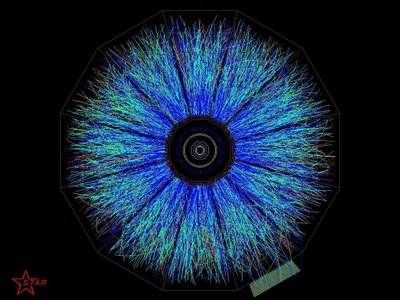New Particles and New Horizons

When I was in high school, we learned about the three constituents of the atom: the neutron, proton, and electron. But this is old information and now even smaller subatomic particles have been studied and categorized.
We were taught that the three states of matter are gas, liquid, and solid but there are actually five states of matter. First, there is plasma, which is a gas that is so hot, many atoms have electrons stripped off, which then creates a cloud of ions, free electrons, and neutral atoms. Plasma is seen in stars, like our Sun, and in lightning. The Bose-Einstein condensate is a bunch of atoms that condense together in an ultra-cold quantum gas.
At Brookhaven National Laboratories, there is a Relativistic Heavy Ion Collider that is used to accelerate and smash the nuclei of gold atoms together. When these nuclei collide they produce up to 10,000 subatomic particles, mostly quarks and gluons. You can see the result of one such collision and the many particle tracks in the picture at the top of this post. In fact, this work might even eventually demonstrate a sixth state of matter: quark-gluon plasma.
The best thing is that, with a simple click, you can share in these new horizons. Afterall, it is the universe you live in.
We were taught that the three states of matter are gas, liquid, and solid but there are actually five states of matter. First, there is plasma, which is a gas that is so hot, many atoms have electrons stripped off, which then creates a cloud of ions, free electrons, and neutral atoms. Plasma is seen in stars, like our Sun, and in lightning. The Bose-Einstein condensate is a bunch of atoms that condense together in an ultra-cold quantum gas.
At Brookhaven National Laboratories, there is a Relativistic Heavy Ion Collider that is used to accelerate and smash the nuclei of gold atoms together. When these nuclei collide they produce up to 10,000 subatomic particles, mostly quarks and gluons. You can see the result of one such collision and the many particle tracks in the picture at the top of this post. In fact, this work might even eventually demonstrate a sixth state of matter: quark-gluon plasma.
The best thing is that, with a simple click, you can share in these new horizons. Afterall, it is the universe you live in.


0 Comments:
Post a Comment
<< Home (ホームページ)